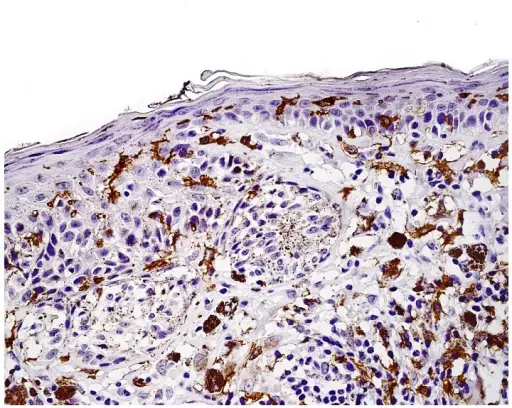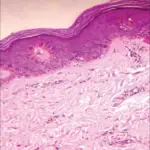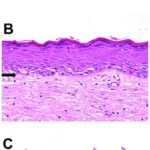Dysplastic Nevus is a form of atypical nevi that is larger and has an irregular shape than the other moles.
What is the Pathology of Dysplastic Nevus?
The pathology of halo nevi is the study of the lesion of the skin and how to manage it and its diagnosis.
-Etiology: The cause of dysplastic nevus is not well understood but those with the FAMMM syndrome are at a higher risk of having this condition.
-Genes involved: IRF4, MTAP, PLA2G6, CDK2NA, CDK4.
-Pathogenesis: The sequence of events that lead to dysplastic nevus: can be hereditary or sporadic. A prescribed genetic study has proposed an autosomal dominant mode of heirloom.
-Morphology: The morphology associated with dysplastic nevus shows asymmetry with irregular borders, varying in color and more than 5 mm.
-Histology: The histology associated with dysplastic nevus shows cytologic atypia, nevi cells are enlarged, nests are adjacent to each other.
How does Dysplastic Nevus Present?
Patients with dysplastic nevus typically do not vary in gender but in age, it occurs mostly in childhood but the latest ii can be seen is at the end of puberty. The symptoms, features, and clinical findings associated with dysplastic nevus include large pigmented lesions which are asymmetrical with irregular borders and can arrange from tan to dark color.
How is Dysplastic Nevus Diagnosed?
The dysplastic nevus is diagnosed dermoscopy and biopsy.
How is Dysplastic Nevus Treated?
The dysplastic nevus is treated due to the high risk of becoming cancerous through surgical removal, and use of broad-spectrum sunscreen.
What is the Prognosis of Dysplastic Nevus?
The prognosis of dysplastic nevus is good but there is a need for continuous monitoring mostly in those who have the FAMMM syndrome to avoid chances of it becoming malignant.



